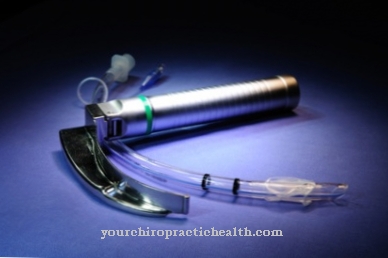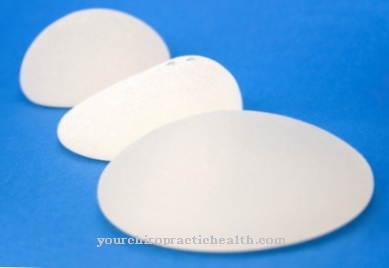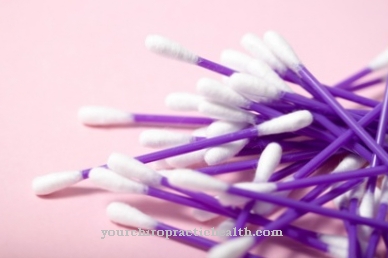Etching gel is used in dentistry to enlarge the tooth surface for better adhesion of tooth fillings or dentures. For this purpose, it is used in the context of the enamel-etch technique and the total-etch technique to etch tooth substance.
What is Etching Gel?

Etching gel consists of a 37 percent gel-like phosphoric acid solution and is used to etch tooth substance for the attachment of tooth restorations using plastic.
In the context of adhesive technology, the solution serves to promote adhesion to tooth enamel and dentine. When the acid is applied to the surface of the tooth, it partially dissolves the enamel and forms small cavities and lacunae. The etching gel thereby enlarges the surface of the tooth. It removes the smear layer from the dentin so that the adhesive can penetrate the dentin and thus improve the adhesion.
In the adhesive technique, a distinction must be made between microretention and dentine-adhesive cementation. Both procedures are used to cement dental restorations. While microretention is attached to the enamel, with dentine-adhesive cementation, the tooth restorations such as plastic fillings or crowns are anchored to the tooth dentine.
Tooth enamel usually only contains inorganic substances such as calcium hydroxylapatite with a small amount of organic substance. The dentin also consists to a high percentage of calcium hydroxylapatite. However, a higher percentage of the organic substance in the form of the odontoblast process and collagen fibers is still contained in the dentin and creates a smear layer on its surface, which is removed by the etching gel.
Shapes, types & types
Several systems have so far been developed for the use of etching gel in the context of adhesive technology, with the three-bottle system still being the predominant application. In the three-bottle system, the three components conditioner, primer and adhesive are each used individually. First, the conditioner (etching gel) is applied to tooth enamel and dentin. After the tooth enamel has been etched, its surface increases due to the formation of cavities. Then the smear layer and some inorganic substance come off the dentin.
The surface prepared in this way can now be mixed with a primer made of hydroxyethyl methacrylate (HEMA). The primer polymerizes within the collagen framework of the dentin and thus provides the basis for the penetration of the adhesive (the unfilled plastic) onto the dentin surface. After further penetration into the dentinal tubules, the dentin and resin bond.
In addition to the prevailing three-bottle system, there are regular innovations on the market. Around 80 bonding systems are now available worldwide. With newer single-bottle systems, the primer and adhesive are combined in one bottle.
There are also self-etching dentine adhesives. In these systems, new acid is generated during the polymerization of the primer, so that a single application of the substance is sufficient.
Structure & functionality
The function of the etching gel is to promote adhesion between the tooth and the plastic polymer to attach dentures to the enamel or dentine. For this purpose, only the tooth enamel is initially etched with gel-like phosphoric acid during microretention. Various inorganic components are released from the enamel and form cavernous depressions. The surface thus increases.
In a second step, the acid-etching technique is used to add a mixture of monomers to the roughened surface of the tooth. The monomers get into the cavities and polymerize out there. This creates a close connection between the enamel and the polymer. The actual melt bond is produced by applying further monomer mixtures of bisphenol glycidyl methacrylate and triethylene glycol dimethacrylate and its polymer. With the help of diffusing oxygen atoms, a solid bond is created through radical reactions.
With the total-etch technique, the dentin underneath is also etched in addition to the enamel. On the surface of dentin there is a smear layer of proteinogenic components of dentin. This layer prevents the plastic polymer (composite) from adhering firmly. After penetrating the tooth enamel, the surface is increased by the formation of cavities. After the smear layer has been removed by the etching gel, it dissolves inorganic substances from the dentin. The hydroxyethyl methacrylate primer applied after the etching gel has been washed off penetrates the structures created and polymerizes there.
Then the plastic solution is applied, which hardens there and can be connected to the dentures. The enormous enlargement of the tooth surface through the effect of the etching gel guarantees very good adhesion.
You can find your medication here
➔ Toothache medicationMedical & health benefits
However, in order to achieve good bonds, a few things must be observed. If the tooth is inadequately prepared, the dentures can loosen and loosen again after just a few weeks. Tooth fillings made of composite also require intensive contact between the tooth, adhesion promoter and plastic filling for the best possible adhesion. The prerequisite is the complete drying of the tooth to be treated, e.g. with the help of a rubber dam. Plastic is hydrophobic and would not adhere well under the influence of moisture. The crosslinking reactions between the individual monomers are disturbed by moisture.
With the total-etch technique, it is also important to remove the smear layer from the surface of the dentin. This layer prevents the adhesion promoter from adhering firmly to the dentin. Shrinkage forces occur during polymerization, which would lead to the filling being torn off the tooth. Therefore, the adhesive still has to be anchored within the dentin.
A firm adhesion of the dentures and the fillings is also of great importance for the general dental health. This reduces the risk of infections in the teeth and in the teeth supporting structures. The physiological chewing function can also be guaranteed for a long time. The health of the teeth and the teeth supporting structures also has positive effects on general health.




.jpg)




















.jpg)


